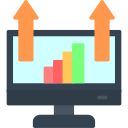Leveraging Analytics for Enhanced Marketing Performance
In today’s fast-paced digital landscape, businesses must adapt quickly to shifting consumer behaviors and competitive pressures. The use of analytics has become a cornerstone for designing and executing high-performing marketing strategies. By leveraging sophisticated analytics tools and methodologies, organizations can transform raw data into actionable insights that drive growth, optimize campaigns, and enhance customer experiences. This approach not only provides measurable improvements in marketing ROI but also fosters a culture of continuous improvement and innovation within the marketing departments. The key is to understand which analytics to use, how to interpret them, and how to apply the derived knowledge to real-world marketing challenges.

Understanding the Power of Marketing Analytics

Integrating Analytics into the Marketing Strategy
Building a Data-First Marketing Culture
Setting Clear Analytics-Driven Objectives
Continuous Optimization through Insights

